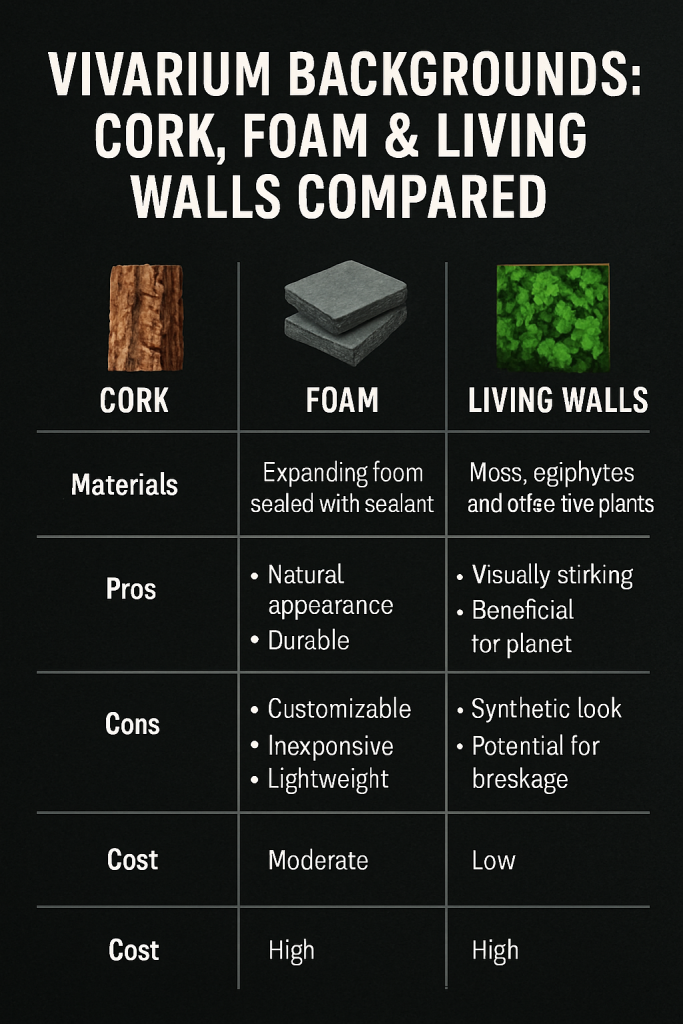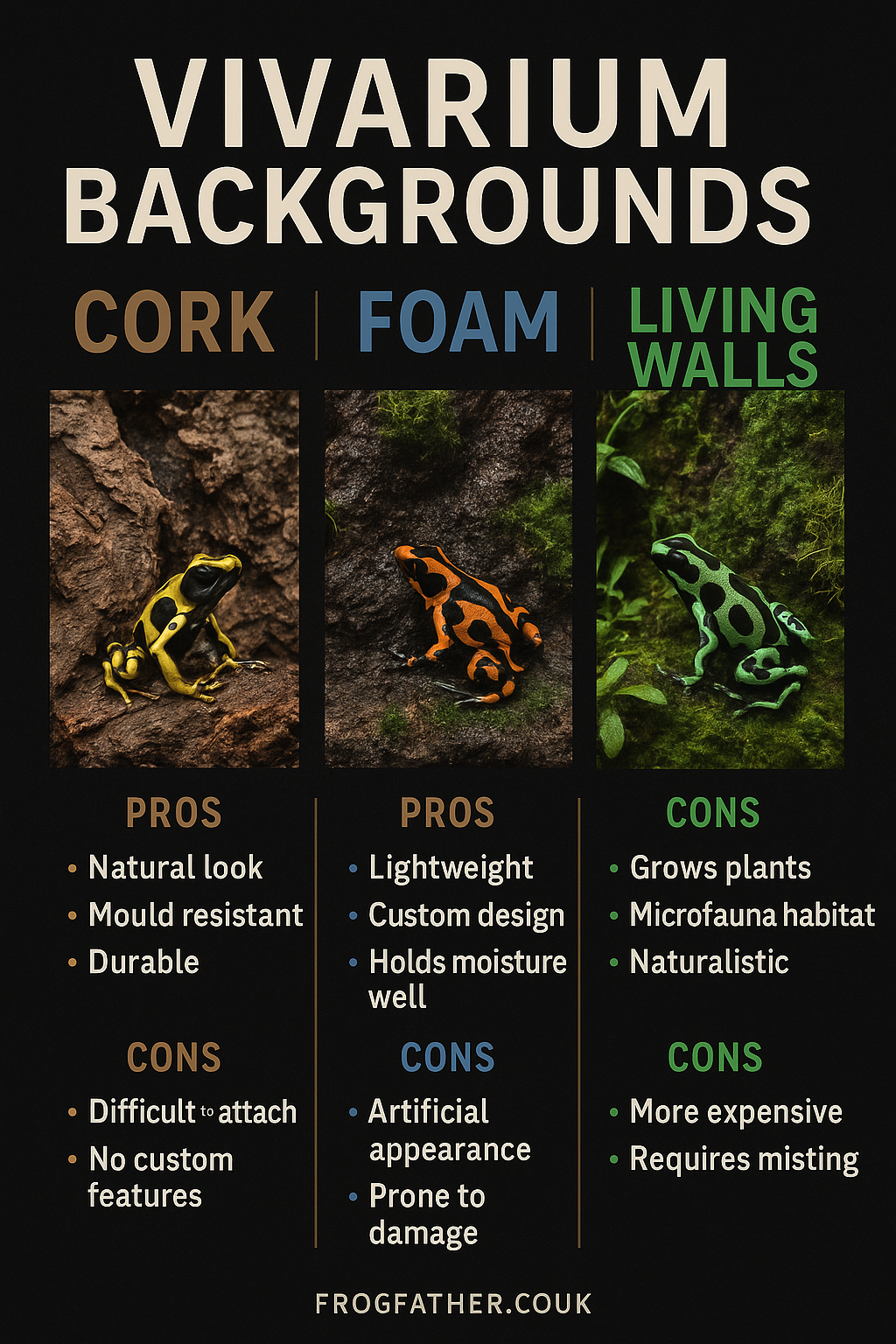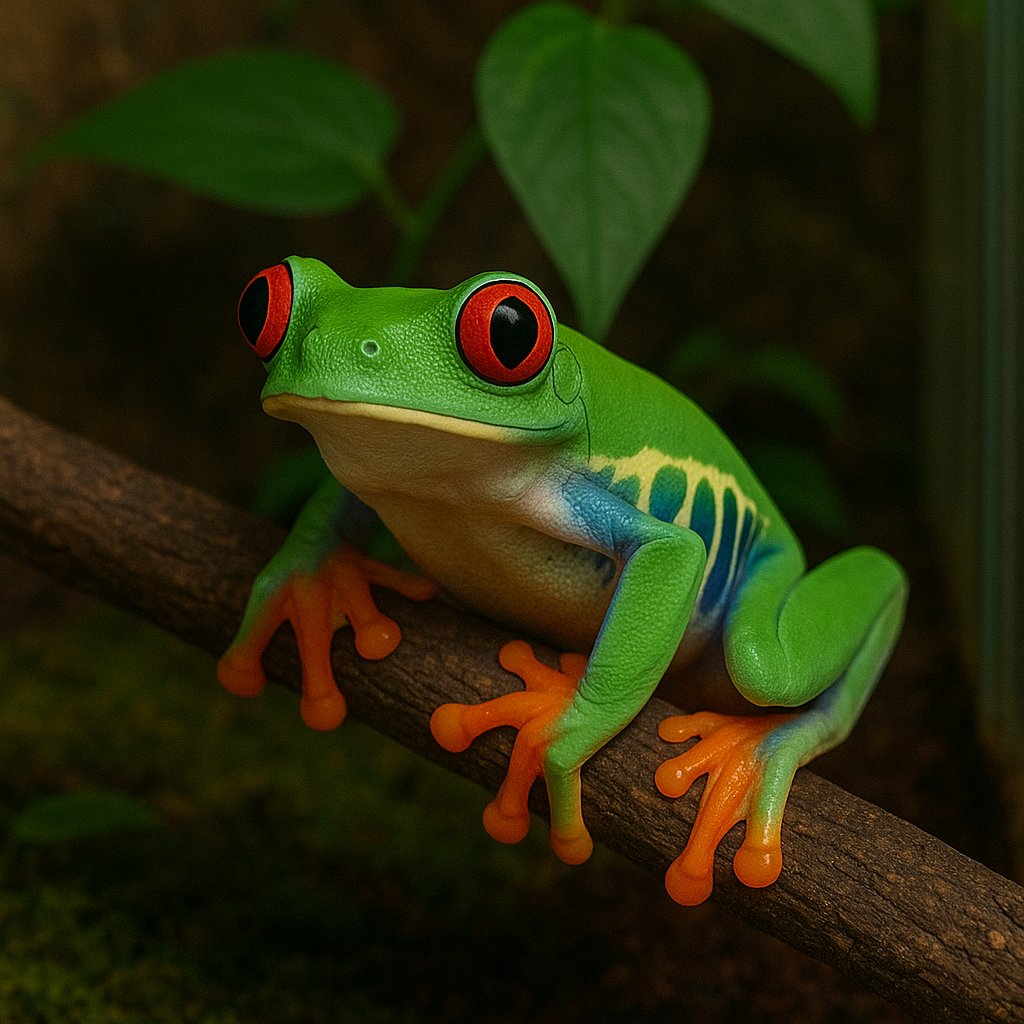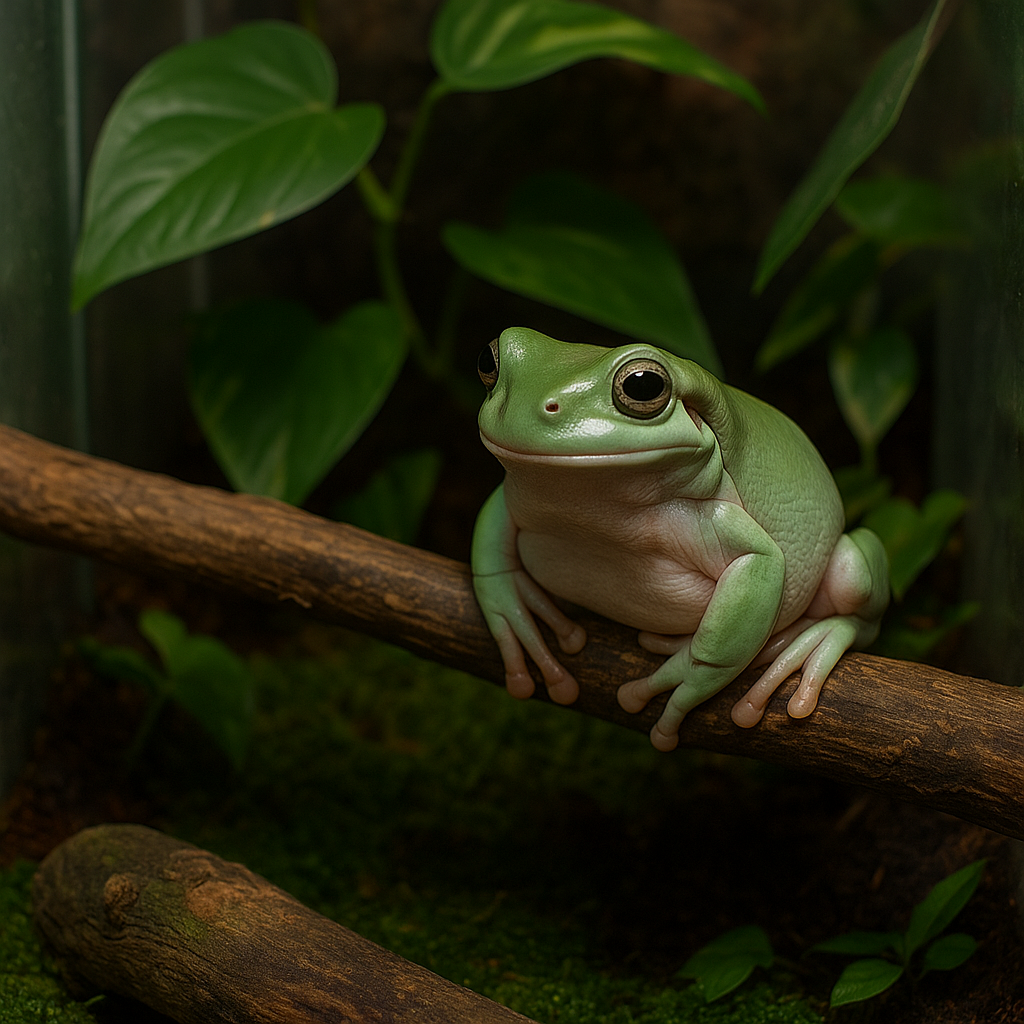If you’re staring at the back of your empty viv wondering what to do with it – welcome. Whether you’re building for dart frogs, day geckos or just want your tank to look like a slice of jungle, the background matters more than most people think.
It’s not just about looks (though we’ll be honest, looks are half the fun). A good background adds usable space, boosts humidity, supports plant life, and gives your frogs places to hide, climb or call from.
This is your UK-friendly guide to the three most popular options: cork, foam, and living walls.
1. Cork Backgrounds
Natural, reliable, low-effort. Cork is a classic for a reason. It’s dead easy to use and it ages beautifully in a humid setup.
- Pros: Lightweight, mould-resistant, holds epiphytes and moss, easy to cut to size.
- Cons: Flat cork sheets look… well, flat. For texture, go with cork bark rounds or mosaic bark pieces.
Best used when: You want fast setup, natural aesthetics, and plant-friendly material. Combine with branchy hardscape for depth.
2. Carved Foam & Sealant
Customisable, dramatic, and a bit messy. Spray foam backgrounds let you create cliffs, ledges, caves – whatever your imagination allows. Carve it once cured, then cover with silicone and press in coco fibre or moss mix.
- Pros: Fully custom design, strong hold for plants and wood, good insulation.
- Cons: Messy build, takes time, materials can off-gas if not cured properly. Can warp if not secured well.
Best used when: You want that proper vertical scape or need to build around in-tank features (like misting nozzles or false bottoms).
3. Living Walls
High effort, high reward. Living walls are actual vertical plant systems – either in DIY planters or with matting materials like hygrolon or tree fern panel.
- Pros: Visually stunning, high humidity retention, frogs love hiding in them, excellent air purification.
- Cons: Can dry out without misting, roots can clog misting heads, tricky to prune.
Best used when: You’ve got a misting system and want a centrepiece enclosure. Especially good for climbing dart frogs like Ranitomeya.
Infographic: Vivarium Backgrounds UK Comparison

Frog Behaviour & Backgrounds
Background choice can affect your frog’s activity. Tinctorius like cork ledges to sit on. Ranitomeya will explore every nook of a vertical foam wall. Even Phyllobates terribilis, which are mostly ground-dwellers, use low cork bark crevices for hiding or egg-laying.
Think about how your species behaves and build to that.
What About Hygrolon?
Hygrolon is a synthetic fabric used in DIY living walls – it retains moisture and encourages moss or root growth. In the UK, it’s often used over foam backgrounds to keep things green without soaking the walls daily.
Fix it using aquarium-safe silicone and let it run for a few weeks before planting.
Installation Tips (UK Climate Edition)
- Seal everything: UK humidity is tricky – use silicone sealant to stop rot or detachment.
- Allow cure time: Foam and silicone need at least 48 hrs in a well-ventilated space. Don’t rush it.
- Use magnets or anchor pins: Especially for heavy cork or large branches.
- Mist evenly: If you’ve got plants high up, make sure your sprayers hit the background directly.
So… Which One’s Best?
There’s no right answer – it depends on your species, your goals, and how much mess you’re willing to make. Here’s the quick summary:
- Want fast, natural, reliable? Go cork.
- Want epic jungle cliffs? Foam and fibre it is.
- Want a full-on plant wall? Living wall all day long.
Whichever route you take, you’re building a home for frogs. Make it functional. Make it lush. And most importantly—make it yours.



